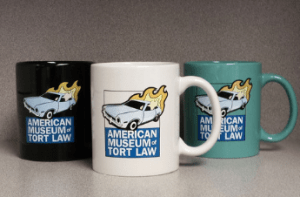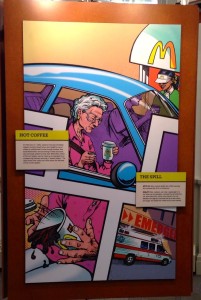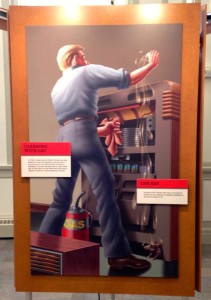 The American Museum of Tort Law, founded by consumer advocate Ralph Nader, is the first of its kind. Located in Winsted, Connecticut, the museum traces the history of important events that resulted in landmark litigation. Its exhibits mainly consist of political cartoons that present important concepts with panache. The visuals grab attention while expressing the relationship between these laws and our daily life.
The American Museum of Tort Law, founded by consumer advocate Ralph Nader, is the first of its kind. Located in Winsted, Connecticut, the museum traces the history of important events that resulted in landmark litigation. Its exhibits mainly consist of political cartoons that present important concepts with panache. The visuals grab attention while expressing the relationship between these laws and our daily life.
The American Museum of Tort Law highlights the place of tort litigation in our society. Tort laws promote carefulness, reinforce a sense of fairness, and compensate victims. They obligate people and institutions to follow certain rules. A concept paper for the museum states: “Tort law embodies the conviction that it is better to build a fence at the top of a cliff than to keep an ambulance parked at the bottom.”1
Sara Nowak, assistant director of the museum, graciously sat down with me to discuss the museum and her work.
 Nowak is a soft-spoken person who is enthusiastic about her position. She not only helps to design events for adults and children, but she also has a hand in marketing, PR, technical troubleshooting, accounting, and even in product development for the gift shop, where the flaming Pinto T-shirt is sold.
Nowak is a soft-spoken person who is enthusiastic about her position. She not only helps to design events for adults and children, but she also has a hand in marketing, PR, technical troubleshooting, accounting, and even in product development for the gift shop, where the flaming Pinto T-shirt is sold.

Nowak says that her museum’s interaction with the community is at the heart of her job. She says, “We’re a place for the community, a tool for it, a resource.” She says the staff of the museum reach out, both locally and out of state, “forging connections wherever we can.”
Nowak has always been committed to building community and promoting culture. She has experience studying journalism, teaching art to young children and adults, and working for community foundations.
 Outreach has its challenges. The museum reviews our legal and cultural history, which can be intimidating for some, to whom the word “litigation” brings to mind images of long documents. Nowak says that people hold assumptions that the museum might be daunting or overly verbose. From having toured the museum, I can vouch that there is nothing to fear; the museum is both relatable and accessible.
Outreach has its challenges. The museum reviews our legal and cultural history, which can be intimidating for some, to whom the word “litigation” brings to mind images of long documents. Nowak says that people hold assumptions that the museum might be daunting or overly verbose. From having toured the museum, I can vouch that there is nothing to fear; the museum is both relatable and accessible.
It only takes a single visit to understand what the museum has to offer. Nowak uses the example of the Red Hat Society, a group of women whose local branch tours Connecticut museums. Nowak says the women in the Red Hat Society responded to the displays on tobacco and the Ford Pinto. The Pinto, of course, was an extremely dangerous car that tended to explode. Most of the Red Hats had smoked cigarettes and rode in a Pinto. The exhibit connects to their own past experience, and makes evident vast cultural change, the result of the passing of tort law.
The American Museum of Tort Law is a place where people can challenge themselves to think differently. When asked about some false preconceptions that people have before visiting the museum, Nowak says that people typically do not fully understand the facts as they relate to a 1992 case in which a woman was burned by a cup of McDonald’s coffee. At the time, many news outlets left out crucial information in their reportage. When asked about the media’s coverage, Nowak thoughtfully replied, “As consumers of media, we must bear in mind that all media outlets have intentions. That said, I appreciate good journalism.” She believes the museum exists to inform people and promote dialogue, presenting information so people can form their own ideas and make an educated judgment.
“I strive to foster engagement with all audiences, and make content – particularly knowledge of people’s rights – available to everyone.” Nowak’s position focuses on people’s experience. Says Nowak, “When there are people in the gallery, it brings it to life. Their connections to the content make it special.” Nowak is happy to work for an institution that aligns her values with her work. She says, “It has reaffirmed my calling and my interest in education as a person with a commitment to social justice. It’s a great way to serve the greater good that’s aligned with my values.
Works Cited
1. Page, Joseph A. “Steadfast and Changing: A Concept Paper for the American Museum of Tort Law.” Washington, DC: American Museum of Tort Law, 2013.
Carolyn Bernier
Managing Editor
